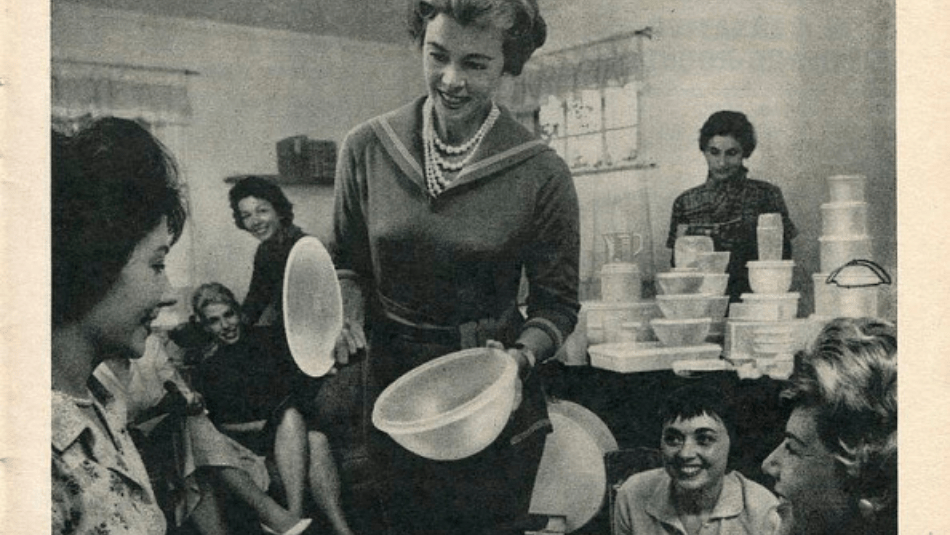If you entered a suburban living room in the 1950s, chances are you stumbled up a flock of women enjoying coffee and sandwiches and discussing the benefits of new Tupperware products. The infamous Tupperware Party was all the rage in the 50s. Usually attended by housewives and neighbors, the party was not only used to sell the new cutting-edge technology that helped food stay fresh but gave the hostess a chance to invite friends to get together and gab. And above all, Tupperware parties gave stay-at-home mothers the ability to earn wages in a world where the working woman was still looked down upon.
Videos by Wide Open Country
What Are Tupperware Parties?
Developed in 1946 by Earl Tupper, Tupperware was designed as a plastic container that was airtight complete with a then-patented "burp seal". However, it seemed that selling the new plastic products in the department stores weren't working. Brownie Wise, who was a former sales representative for Stanley Home Products, brainstormed that Tupperware might sell well if it was demonstrated in front of the customers. She began selling the product at Tupperware home parties under the name, "Patio Parties" and recruited women to sell for her. The premise was simple: The hostess would bring in a Tupperware dealer who would demonstrate the cookware. And as a thank-you, hostesses would receive free or reduced price-merchandise depending on the number of party sales that occurred.
This caught the attention of Earl and in 1951 Brownie was invited to join the company as vice president of Tupperware Home Parties at their Orlando office where she flourished in a position mostly dominated by men. She created party games such as tossing a sealed Wonder Bowl full of grape juice around the room to show off the storage container's seal and pushed her consultants to have immense knowledge about the products.
How Tupperware Empowered Women of the 50s
The salesforce started to grow as more Tupperware consultants joined the team. The sales strategy was simple and allowed women, most who were married with kids, a chance to earn an income and recognition without leaving the home every single day. They sold the products at retail prices and Tupperware took the wholesale price of the item. Everything else was profit for the saleswomen and men.
The Tupperware sales gave a way for men and women to start their own business. One 1960s advertisement follows:
"Being a Tupperware dealer is a happy business, and one you can conduct either in your spare time or full time. Best of all, it can fill your hours with fun and fellowship—as well as with profit. Would you like to get more fun out of life—and add $40 to $60 a week to your family income? You can do both as a Tupperware dealer."
By 1954 there were 20,000 people in the network of dealers, distributors, and managers, according to Kealing, author of Life of the Party: The Remarkable Story of How Brownie Wise Built, and Lost, a Tupperware Party Empire. Tupperware released a monthly magazine Tupperware Sparks to recognize high sales and rewards while Brownie listened to her dealers and altered the marketing strategy when it seemed fit. She even was featured on the cover of Business Week for her accomplishments at Tupperware. However, her time at Tupperware didn't last too much longer. In 1958, after having a tiff with Earl, she was fired. She took him to court and was given a one-time payout of a year's salary, which was around $30,000.
Criticism of Tupperware Parties
Every success hasn't had its fill of criticism. Feminist views on Tupperware parties are equally divided. On one hand, the new business allowed women, who were jobless after World War II, a chance to be a part of the working force. Opposed, selling Tupperware further domesticated women, keeping them focused on homemaking rather than starting a career outside of the home.
Tupperware also faced harsh criticism with their multi-level sales model and in time, parties started to fade as women entered the workforce and online shopping took over. Today, you can still sign up on the Tupperware website to host your own party, just like your mother or grandmother did in the 1950s, burping wonderlier bowls and all.




